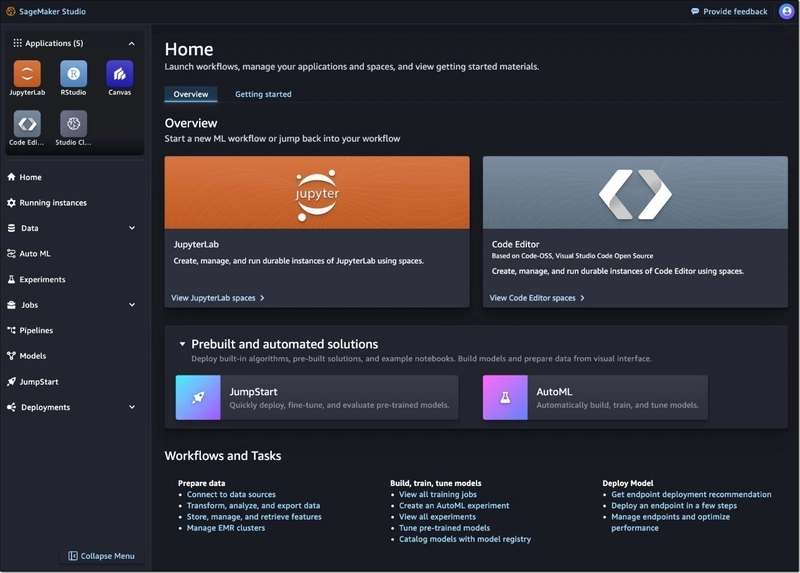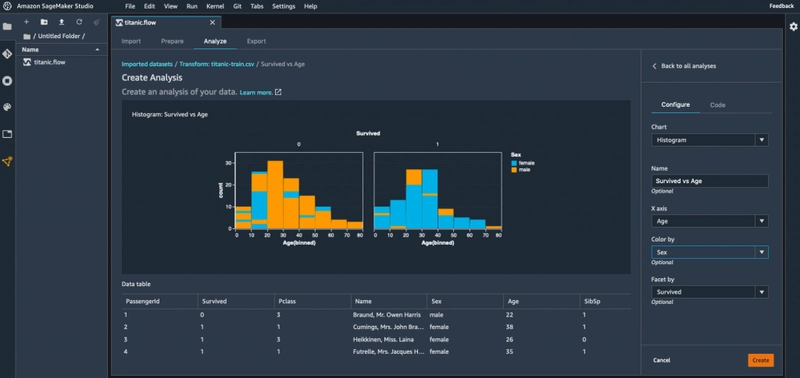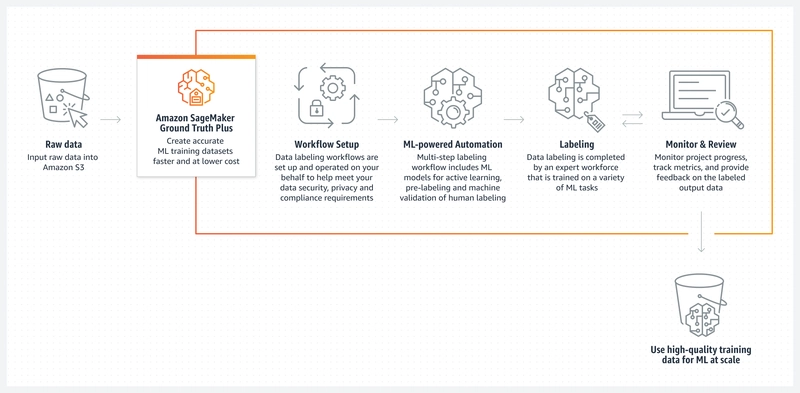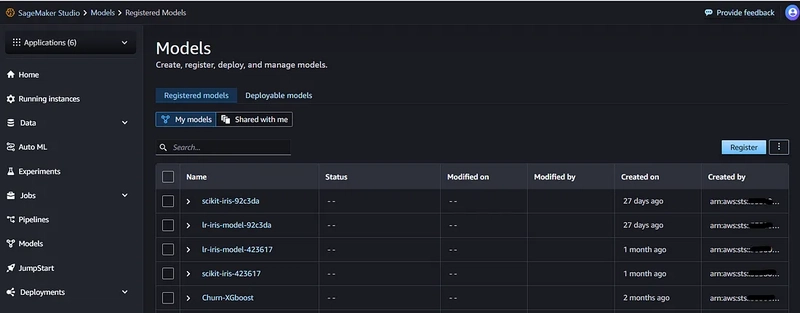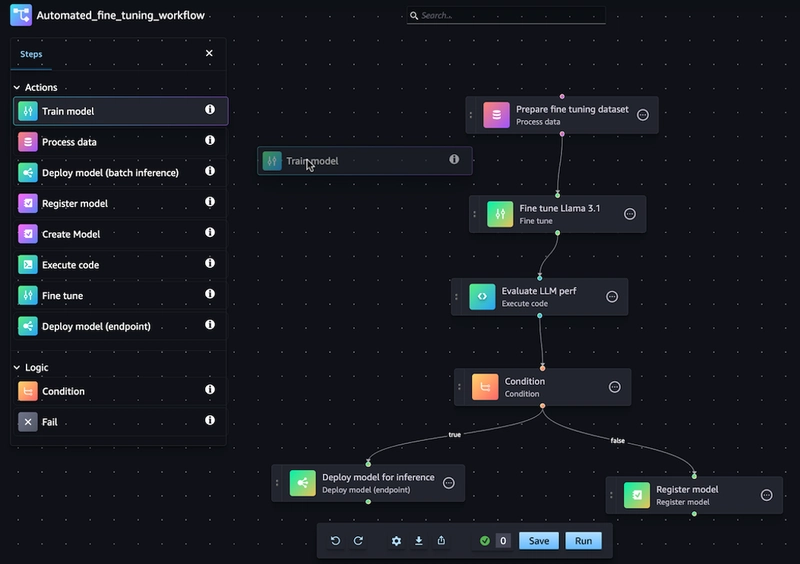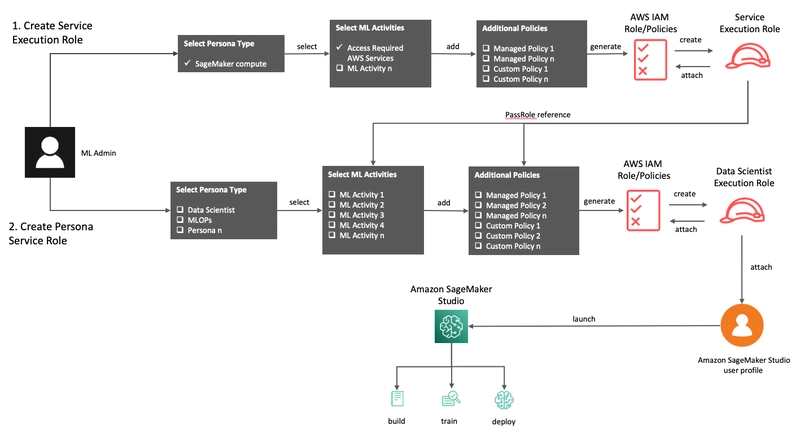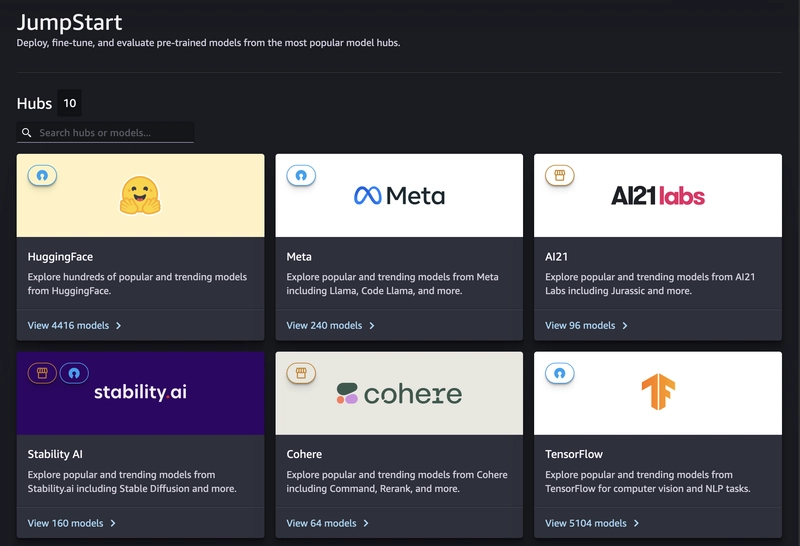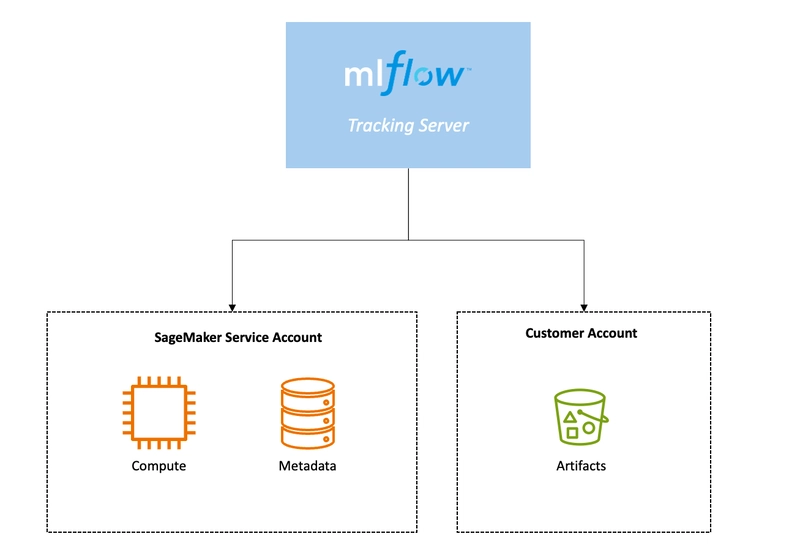A Brief Guide to AWS SageMaker Services
Amazon SageMaker is a fully managed machine learning service that enables developers and data scientists to build, train, and deploy ML models at scale. In this article, we'll explore the key SageMaker services, their functionalities, and how they fit into the ML workflow. 1. SageMaker Automatic Model Tuning Automates the process of finding the best version of a model by running multiple training jobs with different hyperparameter combinations. Uses Bayesian optimization to choose the best values for your next training job. Key features: Reduces manual tuning effort Improves model accuracy Supports custom algorithms Read more 2. SageMaker Deployment and Inference Provides fully managed infrastructure to deploy ML models for real-time inference (endpoints) or batch transformations. Supports automatic scaling and A/B testing. Options include: Real-time endpoints Batch transform Asynchronous inference Serverless inference Read more 3. SageMaker Studio A fully integrated development environment (IDE) for ML that provides a single web-based visual interface for all ML development steps. Features: Notebooks Experiment management Model debugging Model monitoring Read more 4. SageMaker DataWrangler Reduces the time it takes to prepare data for ML from weeks to minutes by providing a visual interface for data preparation. Capabilities: 300+ built-in transformations Data visualization Feature engineering Export to SageMaker Pipeline Read more 5. SageMaker Clarify Provides tools to detect potential bias in ML models and explain model predictions to stakeholders. Features: Bias detection Model explainability Feature importance Supports regulatory compliance Read more 6. SageMaker Ground Truth Accelerates the creation of accurate training datasets through human labeling. Options: Built-in workforce (Amazon Mechanical Turk) Vendor workforce Private workforce Read more 7. SageMaker Model Cards Creates a single source of truth for model documentation to improve model governance. Includes: Model details Intended uses Training details Evaluation results Read more 8. SageMaker Model Dashboard Provides a centralized view to monitor and manage models in production. Features: Model performance tracking Drift detection Alerts and notifications Read more 9. SageMaker Model Monitor Automatically monitors the quality of ML models in production. Monitors: Data quality Model quality Bias drift Feature attribution drift Read more 10. SageMaker Model Registry Catalog for ML models that enables versioning and metadata tracking. Features: Model versioning Approval workflows Model lineage tracking Read more 11. SageMaker Pipeline Creates automated ML workflows that orchestrate SageMaker jobs and steps. Benefits: Reproducibility Reusability CI/CD integration Read more 12. SageMaker Role Manager Simplifies access control for SageMaker resources using customizable permissions templates. Features: Predefined roles Fine-grained permissions IAM integration Read more 13. SageMaker JumpStart Provides one-click solutions for common ML use cases with pre-built solutions. Includes: Pre-trained models Solution templates Example notebooks Read more 14. SageMaker Canvas Enables business analysts to generate accurate ML predictions without writing code. Features: Visual interface AutoML capabilities Business user focused Read more 15. SageMaker MLFlow Integrates the open-source MLflow platform with SageMaker for experiment tracking and model management. Features: Experiment tracking Model registry Artifact storage Read more Conclusion AWS SageMaker provides a comprehensive suite of services that cover the entire machine learning lifecycle, from data preparation to model deployment and monitoring. By leveraging these services, teams can accelerate their ML initiatives while maintaining governance and operational excellence. For more information, visit the official SageMaker documentation. References: AWS SageMaker Documentation AWS Machine Learning Blog AWS re:Invent presentations

Amazon SageMaker is a fully managed machine learning service that enables developers and data scientists to build, train, and deploy ML models at scale. In this article, we'll explore the key SageMaker services, their functionalities, and how they fit into the ML workflow.
1. SageMaker Automatic Model Tuning
Automates the process of finding the best version of a model by running multiple training jobs with different hyperparameter combinations. Uses Bayesian optimization to choose the best values for your next training job.
Key features:
- Reduces manual tuning effort
- Improves model accuracy
- Supports custom algorithms
2. SageMaker Deployment and Inference
Provides fully managed infrastructure to deploy ML models for real-time inference (endpoints) or batch transformations. Supports automatic scaling and A/B testing.
Options include:
- Real-time endpoints
- Batch transform
- Asynchronous inference
- Serverless inference
3. SageMaker Studio
A fully integrated development environment (IDE) for ML that provides a single web-based visual interface for all ML development steps.
Features:
- Notebooks
- Experiment management
- Model debugging
- Model monitoring
4. SageMaker DataWrangler
Reduces the time it takes to prepare data for ML from weeks to minutes by providing a visual interface for data preparation.
Capabilities:
- 300+ built-in transformations
- Data visualization
- Feature engineering
- Export to SageMaker Pipeline
5. SageMaker Clarify
Provides tools to detect potential bias in ML models and explain model predictions to stakeholders.
Features:
- Bias detection
- Model explainability
- Feature importance
- Supports regulatory compliance
6. SageMaker Ground Truth
Accelerates the creation of accurate training datasets through human labeling.
Options:
- Built-in workforce (Amazon Mechanical Turk)
- Vendor workforce
- Private workforce
7. SageMaker Model Cards
Creates a single source of truth for model documentation to improve model governance.
Includes:
- Model details
- Intended uses
- Training details
- Evaluation results
8. SageMaker Model Dashboard
Provides a centralized view to monitor and manage models in production.
Features:
- Model performance tracking
- Drift detection
- Alerts and notifications
9. SageMaker Model Monitor
Automatically monitors the quality of ML models in production.
Monitors:
- Data quality
- Model quality
- Bias drift
- Feature attribution drift
10. SageMaker Model Registry
Catalog for ML models that enables versioning and metadata tracking.
Features:
- Model versioning
- Approval workflows
- Model lineage tracking
11. SageMaker Pipeline
Creates automated ML workflows that orchestrate SageMaker jobs and steps.
Benefits:
- Reproducibility
- Reusability
- CI/CD integration
12. SageMaker Role Manager
Simplifies access control for SageMaker resources using customizable permissions templates.
Features:
- Predefined roles
- Fine-grained permissions
- IAM integration
13. SageMaker JumpStart
Provides one-click solutions for common ML use cases with pre-built solutions.
Includes:
- Pre-trained models
- Solution templates
- Example notebooks
14. SageMaker Canvas
Enables business analysts to generate accurate ML predictions without writing code.
Features:
- Visual interface
- AutoML capabilities
- Business user focused
15. SageMaker MLFlow
Integrates the open-source MLflow platform with SageMaker for experiment tracking and model management.
Features:
- Experiment tracking
- Model registry
- Artifact storage
Conclusion
AWS SageMaker provides a comprehensive suite of services that cover the entire machine learning lifecycle, from data preparation to model deployment and monitoring. By leveraging these services, teams can accelerate their ML initiatives while maintaining governance and operational excellence.
For more information, visit the official SageMaker documentation.
References:
- AWS SageMaker Documentation
- AWS Machine Learning Blog
- AWS re:Invent presentations










































































































































































![[The AI Show Episode 142]: ChatGPT’s New Image Generator, Studio Ghibli Craze and Backlash, Gemini 2.5, OpenAI Academy, 4o Updates, Vibe Marketing & xAI Acquires X](https://www.marketingaiinstitute.com/hubfs/ep%20142%20cover.png)















































































































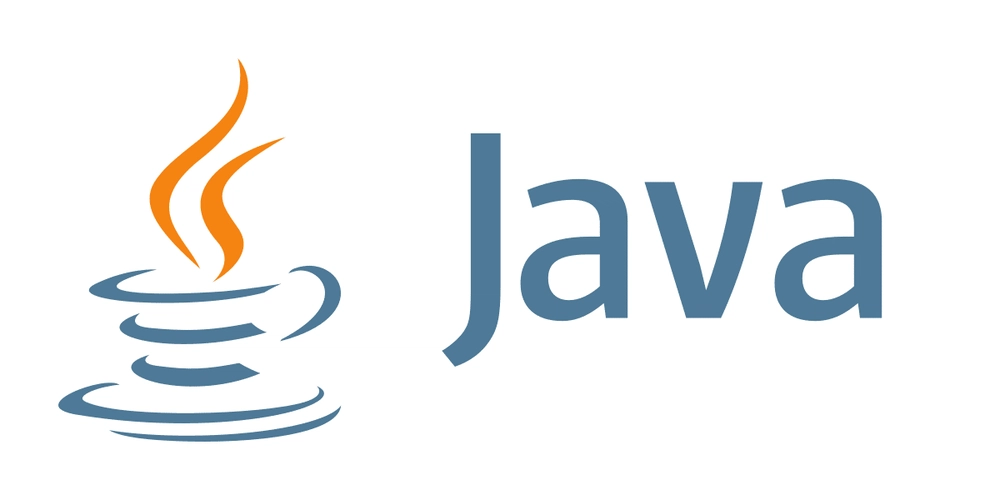












![[FREE EBOOKS] The Kubernetes Bible, The Ultimate Linux Shell Scripting Guide & Four More Best Selling Titles](https://www.javacodegeeks.com/wp-content/uploads/2012/12/jcg-logo.jpg)



![From drop-out to software architect with Jason Lengstorf [Podcast #167]](https://cdn.hashnode.com/res/hashnode/image/upload/v1743796461357/f3d19cd7-e6f5-4d7c-8bfc-eb974bc8da68.png?#)






































































































.png?#)





.jpg?#)































_Christophe_Coat_Alamy.jpg?#)








































































































![Rapidus in Talks With Apple as It Accelerates Toward 2nm Chip Production [Report]](https://www.iclarified.com/images/news/96937/96937/96937-640.jpg)





































































































































